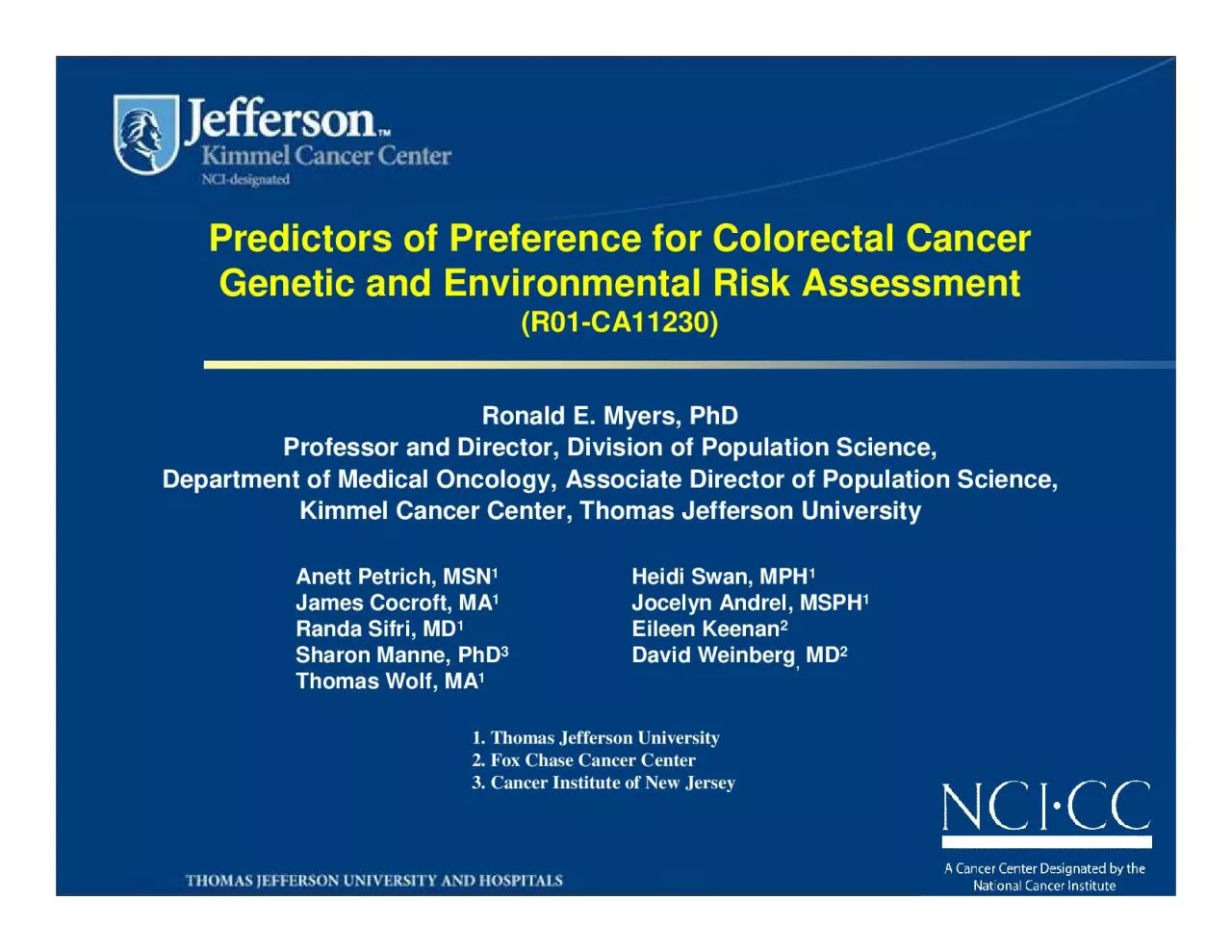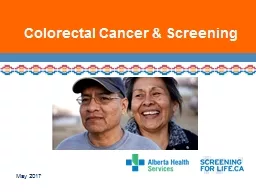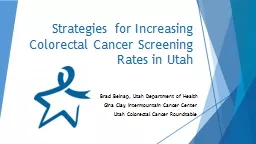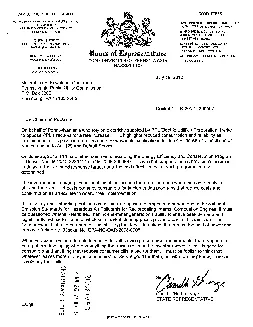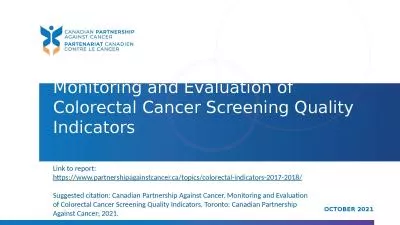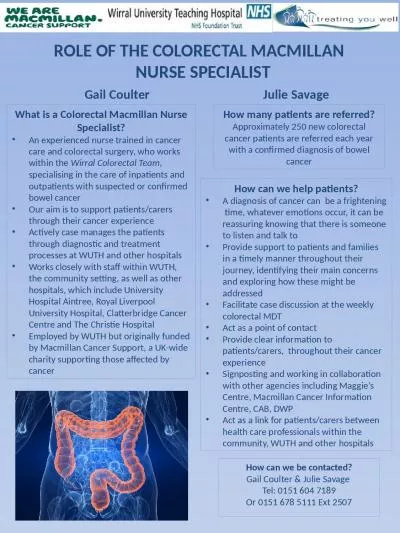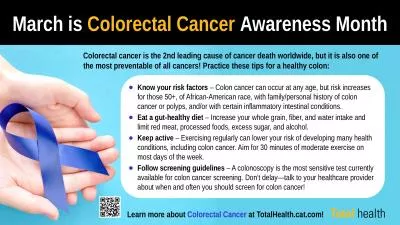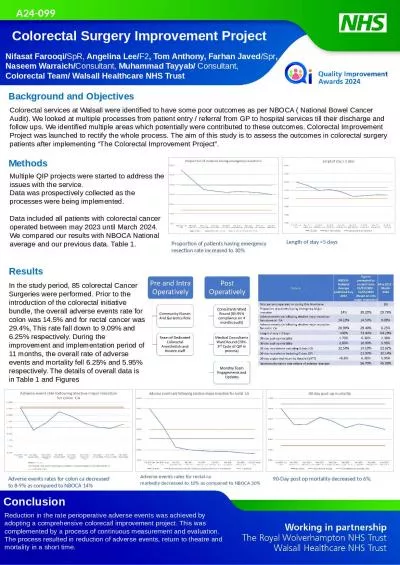PDF-Predictors of Preference for Colorectal CancerGenetic and Environmenta
Author : finley | Published Date : 2021-02-22
Ronald E Myers PhDProfessor and Director Division of Population ScienceDepartment of Medical Oncology Associate Director of PopulationScience Kimmel Cancer Center
Presentation Embed Code
Download Presentation
Download Presentation The PPT/PDF document "Predictors of Preference for Colorectal ..." is the property of its rightful owner. Permission is granted to download and print the materials on this website for personal, non-commercial use only, and to display it on your personal computer provided you do not modify the materials and that you retain all copyright notices contained in the materials. By downloading content from our website, you accept the terms of this agreement.
Predictors of Preference for Colorectal CancerGenetic and Environmenta: Transcript
Download Rules Of Document
"Predictors of Preference for Colorectal CancerGenetic and Environmenta"The content belongs to its owner. You may download and print it for personal use, without modification, and keep all copyright notices. By downloading, you agree to these terms.
Related Documents

